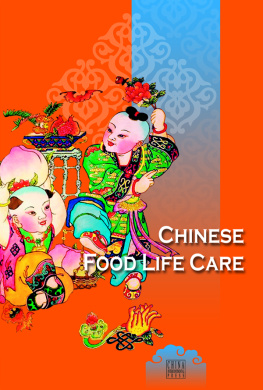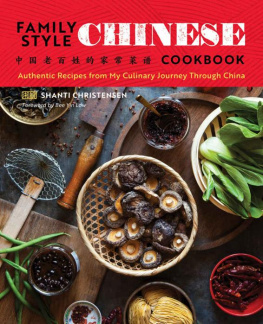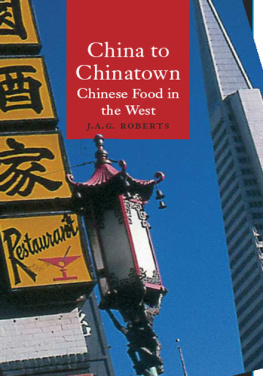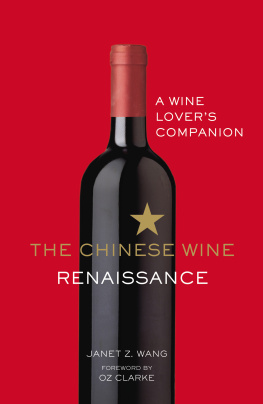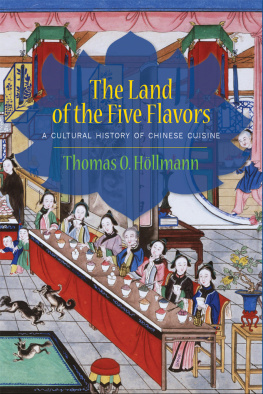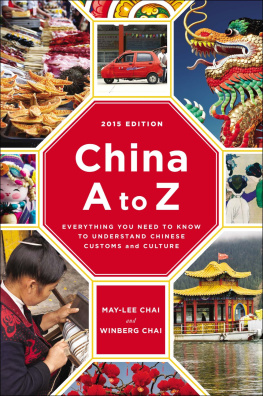A History of Food
Culture in China
By Rongguang Zhao
Translated by Gangliu Wang
and Aimee Yiran Wang

Published by
SCPG Publishing Corporation
401 Broadway Suite 1000
New York NY 10013
USA
A History of Food Culture in China
Copyright SCPG Publishing Corporation 2015
All Rights Reserved.
This book or parts thereof may not be reproduced in any form or by any means electronic or mechanical including photocopying recording or any information storage and retrieval system now known or to be invented without written permission from the copyrights owner.
ISBN-13: 978-1-938368-16-5
Printed and bound in the People's Republic of China by C&C Joint Printing Co. Shanghai Ltd.
Introductory Notes on the Publication
China is an important nation with a long history of food culture. Food consequently has become an essential part of Chinese culture. Over time in the thousands of years since the Xia Shang and Zhou Dynasties the Chinese nation developed a food culture made up of traditions of food wine tea wheat millet taste customs of dining dining etiquette and so on.
Chinese food culture has never been one that is closed. As it developed it constantly interacted with the food cultures of other nations. Via the Silk Road many foods and spices found their way to China from the West such as grapes alfalfa pomegranates cucumbers walnuts sesame broad beans garlic and medicines. These were brought to China by returning emissaries sent to the West by Han Emperors as well as by foreign visitors who were knowledgeable about their nations' cuisine. Chinese food and that of neighboring nations such as India and Japan also underwent exchange via Buddhist pilgrims and government envoys. Inthe recent past Chinese food became globally renowned as a result of the efforts of Western missionaries and overseas Chinese. At the same time it borrowed elements from food cultures of other countries.
Since the 1980s China has developed a broader and deeper connection with the international community with its ever-quickening pace of economic growth. Other nations come to China with brand new perspectives. One of the most intriguing aspects of Chinese culture is its rich cuisine and fascinating cooking. The people of China are proud to show the world this important part of Chinese civilization. We are also obligated to do so as our duty and responsibility.
A History of Food Culture in China is a work that at present stands out with its systematic and unique approach in introducing Chinese food culture. In order to better meet the needs of international readers as a book for general reading we gave the original book major revisions. We have lessened the theoretical accounts simplified the research citations and deleted content that had less connection to the theme and subject of the book. The revisions result in a book that is more concise with better flow and clarity. Now it is more suitable for general reading by readers outside China.
The revised book tells in sprightly and straightforward language about the structure of traditional Chinese food food customs for festivals and celebrations in China Chinese dining etiquette traditional food and cooking methods healthy and medicinal diets as well as historical exchanges of foods between China and other nations. We believe this book can present to our readers a complete and truthful picture of the summarized history and culture of Chinese food.
1. Ingredients in Chinese
traditional cooking
As early as 3000 years ago the ancient Chinese left a written text reading The five grains for nourishment the five fruits for assistance the five meats for benefit and the five vegetables to supplement. Combine and eat this is the way to complete the fine Qi. Of course this is an idealized structure for a nation's diet. Over China's long history the Chinese people when having adequate food supplies have mainly subsisted on a dietary structure of basically five grains and five vegetables to supplement. This formed a sub-vegetarian diet. Owing to the fact that the country has always had a large population and limited arable land yielding a harvest that was barely sufficient for consumption people have relied on a diet that consists of mainly plant-based food. At the same time this led the traditional Chinese diet to include the practice of foraging widely. This was made possible by a land that is eminently suitable for human habitation. Prehistoric Chinese archeological sites yielded a wide selection of plant-based foods: acorns Chinesehackberrieswater chestnuts coixseeds hempseeds wild rice fox nuts ash nuts chestnuts plums apricots grapes cherries peaches persimmons jujubes berries elm fruit walnuts pecans hazelnuts pine nuts pears hawthorns south jujubes melons beans olives etc.
Along with food obtained from foraging animal sources also varied. At Paleolithic sites common animal remains included hyena elephant rhinoceros horse deer tiger antelope cattle pig tapir wolf fox beaver cheetah panda monkey lion donkey sheep camel bear ostrich etc. However with limited techniques and tools early humans relied heavily on plants and small animals for food. Research has shown us that since the middle of the Paleolithic Age diets increasingly included large herbivores such as reindeer red deer spotted deer moose and others. Mammoth and buffalo also had an increasing dietary role.
Scholars used to believe that early humans had a strong ability to hunt based on the large quantities of large carnivore fossil remains discovered in early Paleolithic sites. What these scholars all neglected to understand is that humans were well able to take advantage of animals that were diseased wounded or dead. The bones of these animals survive more easily a fact that resulted in the misunderstanding. The most likely truth is this: early humans would refrain from going after large predators. That the fossilized bones of smaller animals were found in much larger quantities proves this. Most revealing is the high percentage of rodent fossils. Peking Man ruins show that all ash layers contain bones and stones with burned marks. Among these the most common are rats bats and hedgehogs. In some sites these crowd an entire layer. The Peking Man appeared to catch small animals as the bones of them were discovered in large quantities sometimes forming an entire layer. Most show burn marks. Few skulls are connected with the spine but entire skeletons are not found as they were taken apart when consumed. What has been found the most are two types of rats two types of mice and hamsters. There are also other rodents and insectivores. Accurate statistics are not yet available. Rodents are meaty and easy to obtain. Rodents' dens are usually laden with a large amount of stored foods. All these reasons made rodents an ideal source of meat for prehistoric humans in China. It is safe to say the ancestors of Chinese people in the Neolithic period relied on deer and rodents for meat at their dinner tables.
Besides small mammals such as rodents bats and hedgehogs insects and other invertebrates equally became one of the main animal protein sources for early humans. Even today some minority groups in Southeast China still keep the traditions of catching and eating bees fried locusts pickled grasshoppers stir-fried sweet chrysalises loaches cooked with aphids and cooked bamboo worms. Other insects like silkworms scorpions and cicadas are common dishes on restaurant menus all over the country.



